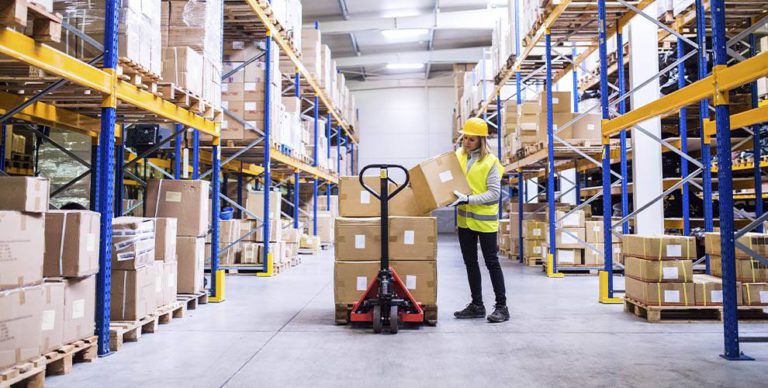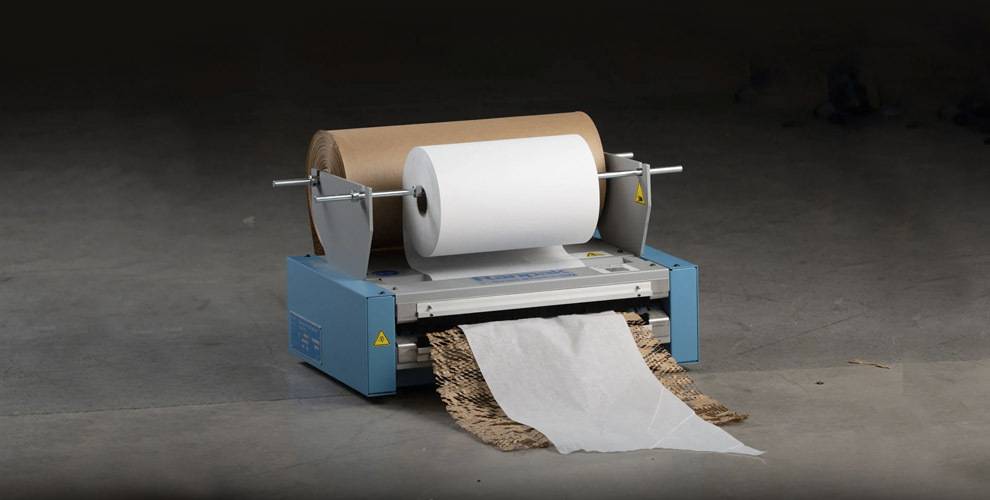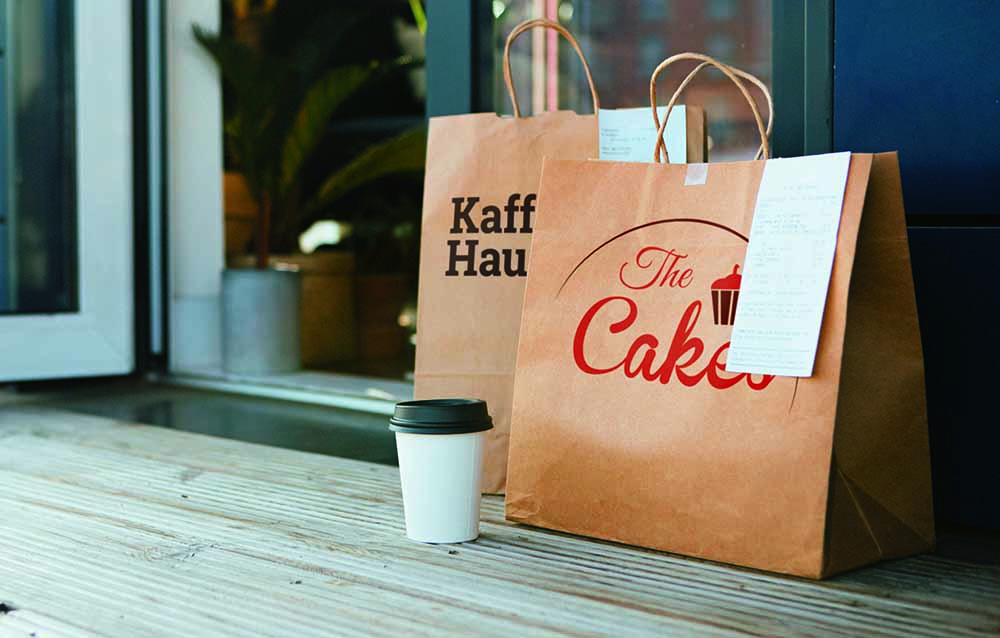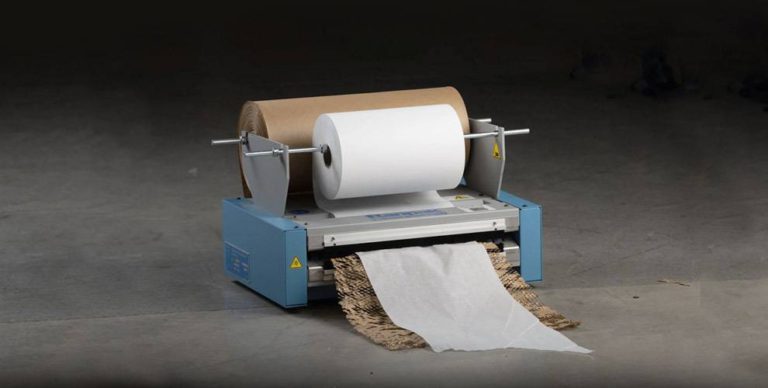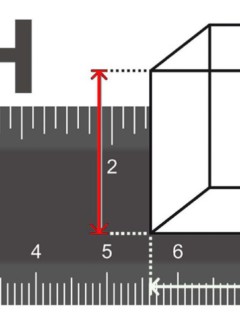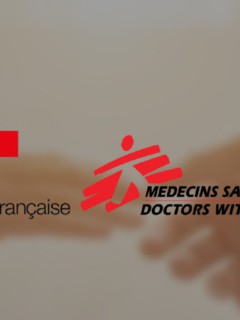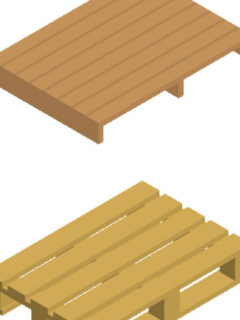That significant art can be created with packaging material is a recognised fact and even noted in the Duden dictionary. Under “packaging art” it says: “Artistic work consisting in artistically draping, covering buildings and landscapes with foil, fabric or the like.” We are always happy to see pictures of works of art that have been created from our products. The “Tape Art” at the illu² Festival, for example, or the truck, pieced together from boxes, painted in detail by the artist.
Packaging art in favour with visitors
The Bulgarian-born Christo (1935 – 2020) is considered the packaging artist par excellence. Together with his wife Jeanne-Claude, he made a name for himself in Germany in 1995 at the latest by wrapping the Reichstag building in Berlin. For their truly extraordinary projects, the couple used cloth, rope, polyester fabric and other packaging materials. Once again, the artist relies on the work of a German company from Greven: the company Setex-Textil weaves the orange-yellow polyamide fabrics for the installation.
Christo’s projects
The “Floating Piers” was packaging artist Christo’s project in 2016. 220,000 plastic cubes wrapped in orange fabric panels allow visitors to walk across Italy’s Lake Iseo, feeling every movement of the water. Walking directly over the water – an extraordinary experience that 270,000 “water walkers” made their own on the approx. 3-kilometre-long footbridge in just the first five days; twice as many as the organisers had assumed in advance.To ensure that the construction of bolted plastic cubes and orange fabric can withstand these masses of visitors and that the maximum permissible number of about 11,000 visitors on the footbridge is not exceeded, a company from Wesel in the Lower Rhine region(LASE PeCo Systemtechnik GmbH) measures and controls the respective “filling level” on the footbridges. In addition, a troop of 150 guards and 30 lifeguards watch over the safety of the visitors. However, the unexpectedly high number of visitors led to the fact that the floating piers are not accessible around the clock as initially, but are closed between 0h and 6h at night – in order to be able to carry out necessary repairs and to keep the wear and tear on the material as low as possible. After the end of the campaign, on 3 July, the plastic will be industrially recycled.
Wood – the somewhat different “packaging material” for art objects
On the occasion of the inauguration of our new location, we were able to fulfil a long-cherished wish: We wanted to crown our new administration building – which is somehow also an architectural work of art – with a real work of art.We quickly found our master in this matter: Guntram Prochaska is one of the internationally sought-after German artists, and what’s more, he comes from the region, more precisely from the nearby “painter’s village” of Grötzingen. His works can be found in many of the world’s great museums. And – what particularly won us over – Guntram Prochaska works with the most sustainable material there is in the world: wood.
This is an excellent fit in that wood is also a very important and elementary material for us at Rajapack. Wood is alive, durable, environmentally friendly and extremely versatile: as a sustainable raw material, wood is the basis for many of our products today. Products – from paper envelopes to cardboard boxes and pallets.
Guntram Prochaska demonstrated this changeability of wood with all his positive energy in a live performance on the occasion of our in-house exhibition and made it tangible with all the senses: the way he creates a sculpture with his chain saw within a very short time, the dynamism and power with which he peels the figure from a simple piece of wood, “unpacks” it, so to speak, is simply spectacular and fascinating!
We, as well as our customers and business partners, were amazed when “the good spirit of Rajapack”, christened Kartonga by the employees, was completed and now warmly welcomes every visitor near our company entrance.
Art with tape – Tape Art at the illu² Festival
Anyone who thought that adhesive tape was just a simple means of sealing cardboard boxes is not quite up to date. Because adhesive tapes are the new graffiti! Born in the search for an alternative to spray cans and spray paint, art with adhesive tapes, called “tapeart“, has now become its own form of urban art, which is enjoying ever greater recognition! No wonder, because the works of art on the walls of houses and on the streets are really impressive. The first European Tape Art exhibition took place in Offenbach this year.
We are very impressed by the art made with tape. Even more so, as we know how “stubborn” the tape sometimes is in its application. How often it gets out of hand and sticks exactly where you don’t want it to. The tape artists, however, have such a grip on the sticky tape that they use it to create packaging art – works that look like they have been painted, impressive examples at https://www.klebebande-berlin.com/.
The illu² in Freiburg
The Freiburg University of Art, Design and Popular Music (hKDM) is also involved with the new form of street art. Organised by the College of Art Design and Media, a tape art workshop took place on the occasion of the Illustration illu² festival in Freiburg on 29.10.2015, which RAJA supported with colourful PVC adhesive tapes. In addition, the organisation team designed their own illu² festival tape with Rajaprint, which was used everywhere in Freiburg’s city centre as a marker for the individual events of the festival. Because such a printed adhesive tape is a real eye-catcher – and packaging art in itself. Source: illu2Adhesive tape artwork
The workshop “Tape Art” came about on the initiative of student Sarah Bethke (4th semester of hKDM). The course was led by the Freiburg artist Zorana Arsic, who worked with the participants to put their individual ideas into practice. Zorana Arsic is a freelance artist and art therapist. For several years she has been leading the Mappenkurs at the hKDM and teaches nude drawing and free drawing in the pre-studies.The results of the workshop are impressive: Very different tape artworks were created and we are still amazed at how beautiful our tape can be!
Source: illu2Packaging art at the RAJA fair stand
Those who know us know that we are experts when it comes to “versatile and colourful”! But versatile and colourful is also the relatively young art form of tape art. And that’s why we asked the tape artist Dino Maat to work his magic with tape at our stand at Fachpack 2016! Live and directly at the stand, Dino created completely new worlds with our Rajapack adhesive tapes in front of the eyes of our stand visitors. Every day, he was allowed to implement his ideas on gift and presentation packaging, packaging machines, as well as on the topic of factory equipment and warehouse organisation with a new theme. In addition to the thematic guidelines, there was still plenty of room for artistic freedom on the design area of the stand.Tape art as an art form: current AND sustainable
This kind of commissioned work is still an exciting experiment, even for the artist. Dino Maat sees tape art on the rise. Companies like BMW or Siemens are already booking tape artists for events. They are supposed to set the scene for rooms, cars and company targets.Normally, however, Dino Maat is more active in Munich’s public spaces. He wants to make people think with his art form. The advantage of tape art in contrast to graffiti art, where most tapers got their start: The tape is much easier to remove again.
And preserved! Because the works of art that were created on the Rajapack stand at FachPack during the three days of the trade fair were always removed again in the evening. This creates free space for the next message – and a lasting work of art by a trendy young artist on the scene. Meanwhile, the works of art decorate the foyer of our company building: Packaging art at RAJA…

The BOX³ project in Freiburg
On 18 January 2014, the event project BOX³ took place at the hkDM University of Applied Sciences Freiburg. This project was created in the subject Event Design in the 4th semester of the Integrated Design course under the direction of Silke Jaspers. One item on the programme was the workshop “Recycled furniture – build your own piece of furniture out of corrugated cardboard”. Here, exhibits were designed by the students of the university themselves, such as a chic RAJAPACK stool.RAJAPACK actively supported the BOX ³ project by providing boxes: With 120 brown corrugated cardboard folding boxes , the students could let their imagination run wild!
A truck is made from cardboard boxes
Our cardboard boxes see a lot. They provide protection for a wide variety of products, pass through countless hands and are shipped to the most exotic countries. But besides their function as protection during transport, they can also become a creative object of art.
For the summer party of one of its customers in the logistics sector, the CROMATICS agency came up with something very special: a truck built from RAJA cartons. The aim was to creatively represent the client’s two main business areas of transport and logistics. For this, flat corrugated cardboard folding boxes were stacked on top of each other and painted illustratively as a truck by an artist on site.
The visitors to the summer festival also had the opportunity to paint the smaller boxes individually and load them onto the truck’s loading area. The result is impressive: the work of packaging art now adorns the entrance area of the company.
Building with cardboard boxes
For the French artist Olivier Grossetête, cardboard boxes are also the main components of his artworks. RAJA therefore did not have to think twice and supported the artist in two of his art actions. As part of the MoMeNT cultural festival, for which the city of Tongeren organised various activities in 2017, the monumental building made of cardboard was unveiled on 15 August 2017 on the market square in Tongeren, the location of our European warehouse in Belgium.
Olivier Grossetête plays with shapes, quantities and materials and is known for his monumental but also ephemeral buildings made of cardboard. It all began with his first building in 1998: a replica of the city hall of his hometown Marseille made of cardboard. Nearly 100 more followed, including the Munich City Hall in 2015.
But Olivier Grosstête was not only supported by Rajapack in Tongeren. On the occasion of the Paris Festival “Paris l’été “, the artist built a utopian city out of cardboard from 17 to 30 July. “La Ville éphémère” (The Ephemeral City), the name of the project, was almost twenty-five metres high and weighed more than a tonne. Since for us not only packaging is an art, but we also appreciate and promote art made of packaging, RAJA, whose headquarters are after all in Paris, supported Olivier Grossetête’s action with 7,000 RAJA cardboard boxes and 2,600 rolls of adhesive tape.
Art made from rubbish bags
There are those things that everyone needs, but that get little attention because they are so commonplace that you don’t even notice them. Rubbish bags are one of these things. And what can you say about bin liners? They come in different sizes and colours, in different thicknesses for heavy or light waste. You would think that’s about all there is to say on the subject of refuse sacks.But rubbish bags can do even more, because they are a popular material for upcycling, for example for making spider webs for Halloween, for making children’s kites, for crocheted baskets or for carnival costumes in all variations. Packaging art as upcycling!
Is this art or can it go?
In addition, rubbish bags are also a popular material for use in modern art. This can certainly lead to misunderstandings. In 2004, for example, a diligent cleaner in London’s Tate Britain museum disposed of a rubbish bag filled with paper. However, it belonged to a work of art by Gustav Metzger, who wanted to depict the transience and “self-destruction” of all art. The artist did not take offence at the cleaning lady and provided a replacement.For the street artist Francisco de Pajaro, rubbish bags are a preferred material from which his art is created. Under the motto “Art is Trash”, he transforms rubbish bags in the streetscape into idiosyncratic works of art.
Art from Packaging: Edge Protection at the CAPTCHA Design Festival
For the third year in a row, the CAPTCHA Design Festival took place in Mannheim at the end of August and beginning of September 2016 and for the first time RAJA supported the festival as a sponsor. Every year the festival focuses on a theme, in 2016 it was “Contrast”.
The CAPTCHA Design Festival focused on 4 workshops for a total of 80 students. With very different approaches, ideas were first developed on the theme of contrast, which the participants then dealt with experimentally. In three days, under the professional guidance of guest lecturers, very different works were created in different areas: for example, design in space, with different digital possibilities, as well as classic print media. On 2 September, the results of the workshops were presented together with submitted works in an exhibition at the Mannheimer Kunstverein.
We were particularly impressed by the art objects from the workshop led by Yalla Yalla! studio for change. The focus of the work of this team of young planners for architecture and urban planning is on urban interventions and collaborative forms of urban development. Together with communication design students, they therefore went into the city and drew inspiration from Mannheim’s Rheinstraße. The street is not exactly known for its beauty and is very dreary in some corners. The aim was to enhance this dreariness with colourful objects. In four groups, the design students each created a work with cardboard and the edge protectors made of card board from Rajapack. The objects were then on display for a short time in Rheinstraße and finally at the vernissage of the Captcha Design Festival.
Works of art made from edge protectors: The projects
The aim of the workshop on the theme of space was to use the objects to give ideas for a more beautiful cityscape. In any case, we are once again thrilled that our products not only serve as packaging, but that they can also be made into great works of art:
- The “colour case”, consisting of thirty brightly painted edge protector corners, for example, hung down from a bridge railing, moving in the wind and thus creating a cheerful mood.
- A pink kiosk made of edge protectors was also installed in the tangle of bridges on Rheinstraße to invite people to linger and exchange ideas.
- The object “HansGuckInDieLuft” was designed to set the scene for certain details of Rheinstraße: a long telescope was created from turquoise cardboard. With the help of mirror foil, an image is projected onto the ceiling and back of the elongated box. In this way, bridge railings and steps appear very close when looking through.
Post-it® War – The art of making art out of memos
When was the last time you were taught a lesson? No, we don’t mean the list of to-do’s your boss dismissed you from the meeting with the other day – even though the term “memo” is actually used in this sense, or at least was (in Latin also “memorandum“). In today’s sense of the word, you give someone a ‘lesson’ if you want to take revenge for something and at the same time show them the consequences of their rash actions, i.e. make them think. Ideally, this “counter-attack” works with a wink and without causing serious harm to the “victim”.
The emergence of Post-it art
Seen in this light, it was a master coup that employees from two opposite office complexes in Paris delivered to each other in the summer of 2011. In the Parisian suburb of Montreuil, employees of the company Ubisoft (computer games) covered their office windows with different coloured Post-its® in June, so that alien figures emerged from the small “thought slips”. Challenged in this way, employees of the office complex opposite (the bank BNP Paribas) countered with rabbits “mosaicked” from Post-it® notes on the windows, which the aliens shot down. The “war” had begun, and starting in Paris, people all over Europe competed with the help of the little colourful stickers.
Do-it-yourself mosaic technique
 The art of creating a work of art from many small, differently coloured pieces with an eye for the big picture is almost as old as mankind itself. The first mosaic dates back to about 400,000 years ago. By the Roman Empire at the latest, mosaics were a widespread form of art. Behind each and every one of these works is an incredible amount of dedication and patience – Europe’s largest picture made of mosaic stones, covering an area of 880 m², is the frieze on the Haus des Lehrers on Berlin’s Alexanderplatz, which consists of around 800,000 stones.
The art of creating a work of art from many small, differently coloured pieces with an eye for the big picture is almost as old as mankind itself. The first mosaic dates back to about 400,000 years ago. By the Roman Empire at the latest, mosaics were a widespread form of art. Behind each and every one of these works is an incredible amount of dedication and patience – Europe’s largest picture made of mosaic stones, covering an area of 880 m², is the frieze on the Haus des Lehrers on Berlin’s Alexanderplatz, which consists of around 800,000 stones.
And the technique of creating the “big thing” from many small pieces is still very popular. In modern bathrooms as well as on office windows.
It doesn’t have to be 800,000 Post-it®s. But in the course of an office year, quite a few of the colourful office helpers come together. So let your creativity run wild and simply stick the post-it notes in the office window to the great delight of colleagues and neighbouring employees. You can find simple instructions for a classic of Post-it® art, the Pac-Man, here.
This video shows that removing them can also be fun!
Packaging art – always fascinating
There is an incredible variety of materials and forms under the term “packaging”. This is what makes packaging so exciting as a starting point for art. With the very different properties of foil, cardboard, corrugated cardboard, strapping tape, packing silk or adhesive tape, one finds an almost unlimited “playground of possibilities”.With “La collection RAJA art”, Danièle Kapel-Marcovici, President of the RAJA Group, has also combined two of her passions: Packaging and art. Twenty years ago, she discovered the interest of artists in packaging materials and founded the RAJA art collection, which today comprises around one hundred works: Paintings, sculptures, photographs, installations and video created by recognised or emerging French and international artists.












